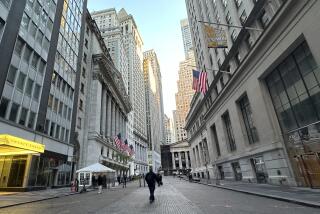Chief Economic Gauge Up 1st Time in 3 Months
- Share via
WASHINGTON — The government said today that its chief economic forecasting gauge rose in July for the first time in three months, further chasing away fears of a possible economic downturn.
The Commerce Department said its Index of Leading Economic Indicators rose a modest 0.2% in July after registering no gain in June and plunging by 1.3% in May, the biggest drop since late 1987 after the stock market crash.
The small July increase in the index was in line with expectations of many analysts, who believe that growth should continue at a moderate pace for the rest of the year.
That view is a sharp reversal of the prevalent opinion just a month ago when weakness in the leading index and a variety of other government statistics had raised fears that the economy was about to topple into a recession.
But since that time, the government has basically rewritten economic history, issuing various revisions showing that everything from employment growth to consumer spending were stronger than originally believed.
“The image we had of an economy on the verge of a recession has been changed by these revisions,” said Bruce Steinberg, senior economist at the New York brokerage firm of Merrill Lynch.
The leading index is a compilation of 11 forward-pointing business statistics designed to forecast economic performance three to nine months down the road.
In July, five of the economic statistics showed signs of increasing strength, five flashed weak signals and one was unchanged.
Growth in Money Supply
The biggest source of strength was a pickup in growth in the nation’s money supply. The Federal Reserve, which had been restraining monetary growth in an effort to fight inflationary pressures, has now switched course and over the past two months has been loosening credit conditions.
Other sources of strength were a jump in consumer confidence, a rise in stock prices, an increase in plant and equipment orders and an increase in the backlog of unfilled manufacturing orders.
More to Read
Inside the business of entertainment
The Wide Shot brings you news, analysis and insights on everything from streaming wars to production — and what it all means for the future.
You may occasionally receive promotional content from the Los Angeles Times.










